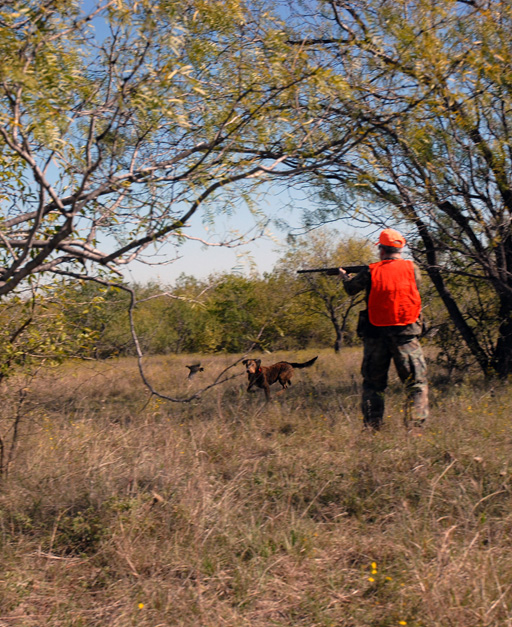by John Jefferson
Quail season opened October 31 and runs until February 28. But good luck on finding birds, according to TPWD’s annual quail forecast issued in late October.
Texas quail populations vary from bumper to bust from one year to the next, often remaining hard to hunt following a terribly dry year of meagre hatches. How can that happen?
It’s really pretty simple. Nature has to add water! And if the countryside fails to receive enough, the usually hot, dry, Texas summer will decimate the quail population.
By “water”, I mean rainwater. You can’t just take a garden hose and spray water on quail habitat like you would your tomato patch. They don’t make hoses long enough to douse all the potential quail country in Texas’ 254 counties, and there isn’t a faucet attached to enough water to do the job.
Every few years, enough rain falls to produce a bumper crop. The first year I lived in South Texas, we had a killing drought. Quail were rare. Rats and mice came into town to grab a drink anywhere they could. Parks and Wildlife considered extending the deer season to allow hunters to remove more deer to help the remaining ones survive. I trapped and shot more mice in our garage than I’d ever seen before. I awoke one night to find a mouse eight inches from my face. We worried about our baby daughter.
Then, it started raining. A hurricane brought so much rain that a new lake rose up out of the sand south of Falfurrias. The quail population exploded! Driving from Rachel to Rio Grande City, we hit so many bobs that I told my boss I could have gotten a limit by sticking a crab net out the window as we sped alongside the McGill Ranch. That’s not just a “Texas Brag”; we hit dozens. During that season, I had to be treated for a knot on my arm from excessive shotgun shooting! Then the rain subsided. Hanging a shrimp trawl out the window after that might have caught nothing but “love bugs”.
And that’s where we are in most of Texas, today. Bobwhites are scarce. South Texas and Rolling Plains ecoregions host the highest populations. In West Texas, scaled (blue) quail numbers fell from last year –14.1 per sighting compared to 25.5 in 2019.
Quail hunting is a truer “hunting sport” than some others. But it can be dangerous. A respected lawyer was hunting on a friend’s ranch in South Texas and stepped out from behind the brush and was shot by another hunter who was shooting a bird in flight. Another man I know was shot in the face by his hunting companion. Neither man was critically wounded. Both were fortunate. It happens with bird shooting. But shouldn’t!
Enjoy it, but know your hunting companions and keep a safe distance. Wear blaze orange and be willing to pass up shots that might be dangerous. No bird is worth shooting another human. Or someone’s hunting dog.
JJ







